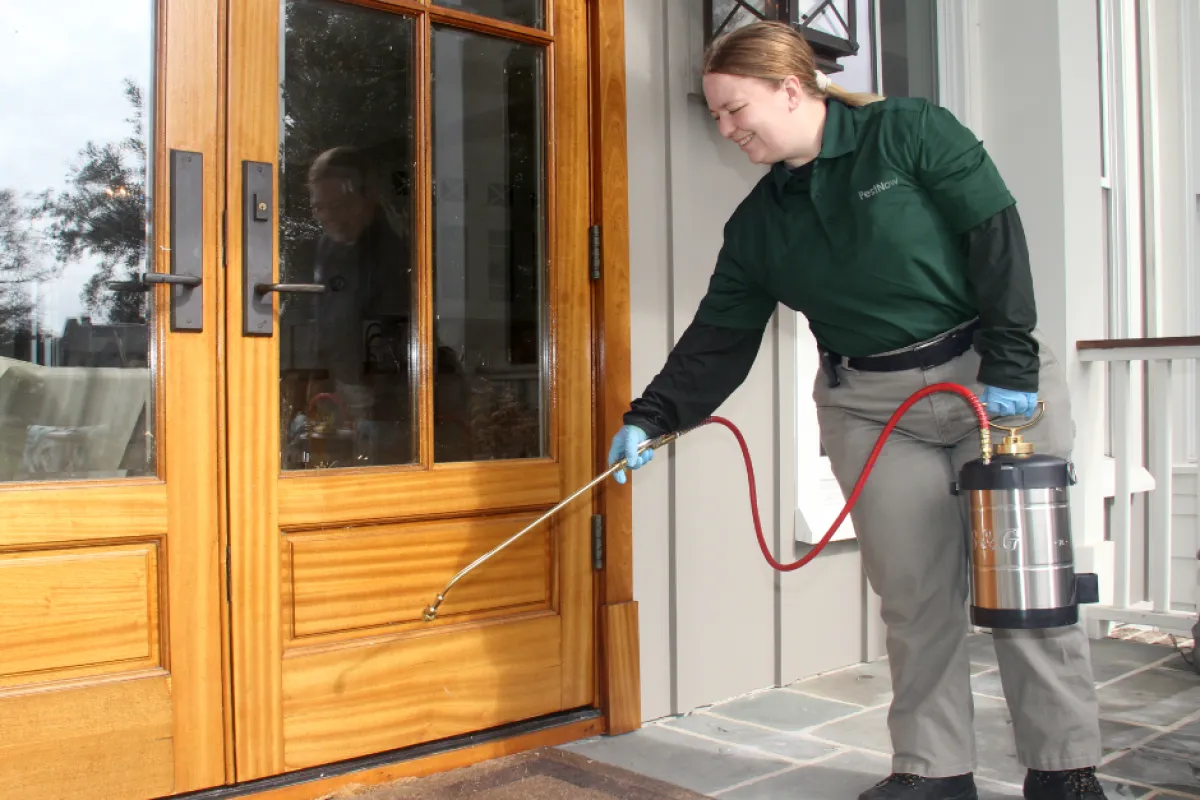High Quality A1 Pest Control Services Charlotte - Safeguard Your Home
Bed Insect Therapy Break Down: Contrasting Chemical Vs. Non-Chemical Solutions
In the realm of pest control, specifically when handling the relentless problem of bed pests, the choice between chemical and non-chemical therapy remedies can be a critical one. Both approaches provide distinctive advantages and disadvantages, influencing aspects such as efficiency, safety and security considerations, and general expense. By examining the nuanced details of each technique, a more clear understanding of which course to pursue in attending to a bed bug problem can be obtained.
Effectiveness of Chemical Therapies
Chemical treatments for bed pest problems have actually been commonly identified for their potent and fast effectiveness in eradicating these parasites. When considering the efficiency of chemical therapies, it is crucial to comprehend that they can supply a detailed and quick solution to a bed insect problem. Specialist pest control specialists commonly depend on insecticides to target bed bugs at numerous phases of their life cycle, consisting of grownups, nymphs, and eggs. These chemicals normally work by disrupting the bed insects' nerves, causing paralysis and ultimate death.
Additionally, chemical treatments have the advantage of supplying recurring impacts, indicating that they can continue to eliminate bed bugs even after the initial application. This residual activity is specifically helpful in combating any kind of potential re-infestations. Furthermore, the quick action of chemical therapies can bring alleviation to individuals facing severe bed bug infestations, allowing them to restore control of their home rapidly.
Safety Worry About Chemical Solutions
One essential aspect that needs mindful consideration when using chemical services for bed insect therapy is ensuring the security of passengers and the setting. Exposure to specific chemicals made use of in bed insect treatments can lead to respiratory concerns, skin irritability, or other negative responses, specifically in individuals with pre-existing problems or sensitivities.
Furthermore, the environmental influence of chemical solutions is an additional considerable consideration. Some pesticides made use of in bed insect therapies might be unsafe to helpful insects, wild animals, and communities if they seep into the dirt or water supply. It is important to make use of chemical treatments carefully, following safety standards, and considering less hazardous choices to reduce these risks and guarantee the secure and efficient administration of bed bug problems.
Benefits of Non-Chemical Strategies
Thinking about the prospective safety and security worries and ecological effect associated with chemical solutions for bed bug therapy, discovering non-chemical strategies provides an appealing alternative with a number of distinct benefits. Non-chemical therapies are eco pleasant, as they do not contribute to air or water air pollution, making them a lasting choice for parasite control.
Additionally, non-chemical options can be effective in targeting bed bugs, including hard-to-reach areas where chemical therapies might not penetrate - A1 charlotte pest control companies. Methods such as heat treatment, vacuuming, heavy steam cleaning, and mattress encasements offer thorough removal without the use of damaging chemicals.
Limitations of Non-Chemical Treatments

In addition, non-chemical treatments commonly require numerous applications to achieve effective eradication. This can be taxing and may not constantly guarantee complete removal of all bed bugs and their eggs, specifically in concealed or hard-to-reach places.
Additionally, the success of non-chemical therapies heavily relies upon appropriate implementation and thoroughness, which can be testing for individuals without professional know-how. Inadequate application of non-chemical methods might result in insufficient eradication, bring about relentless problems and the demand for additional treatments.
As a result, while non-chemical therapies have their benefits, it is vital to acknowledge these limitations and consider them when figuring out one of the most efficient strategy for taking care of bed pest problems.
Price Contrast: Chemical Vs. Non-Chemical Options
Offered the constraints linked with non-chemical therapies, an important aspect to assess in the context of bed bug management is the cost comparison between chemical and non-chemical options. Chemical therapies typically involve the application of pesticides by professionals, which can vary from $250 to $900 per room, depending on the seriousness of the invasion and the size of the area to be dealt with. In comparison, non-chemical therapies like heat therapy or heavy steam can be more expensive, with prices ranging from $1,000 to $6,000 for an entire home. While the first price of chemical treatments might appear reduced, multiple treatments may be required to fully eliminate the invasion, potentially boosting the total price. On the various other hand, non-chemical options may supply an extra environmentally friendly and sustainable service, although they can be cost-prohibitive for some individuals. Eventually, when taking straight from the source into consideration the cost of bed bug therapy alternatives, it is essential to evaluate the upfront expenditures against the efficiency and long-term sustainability of the selected technique.
Final Thought

Taking into consideration the potential safety and security worries and ecological impact connected with chemical solutions for bed insect therapy, exploring non-chemical techniques presents an appealing choice with several unique advantages.Given the constraints connected with non-chemical treatments, an important facet to examine in the context of bed bug management is the cost comparison between chemical and non-chemical options. In contrast, non-chemical treatments like warmth treatment or vapor can be a lot more costly, with costs ranging from $1,000 to $6,000 for Get the facts a whole home. While the initial price of chemical treatments might seem lower, several treatments may be required to completely eradicate the infestation, possibly increasing the general cost.In final thought, when contrasting chemical and non-chemical bed pest treatment choices, it is important to think about efficiency, safety and security, advantages, limitations, and cost.